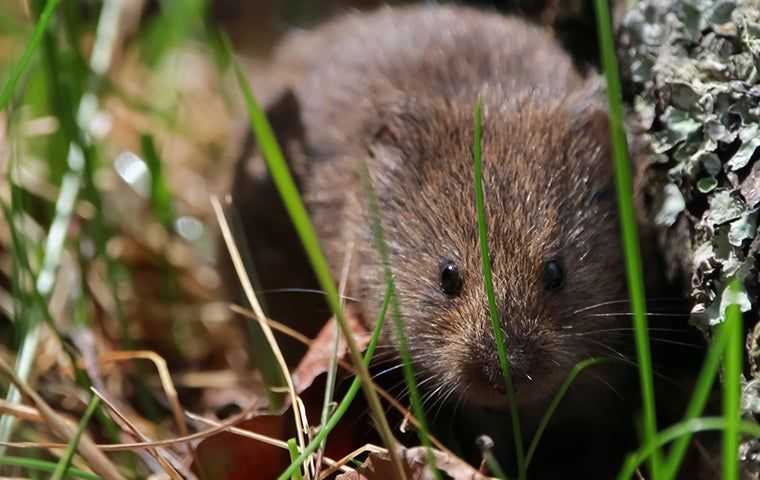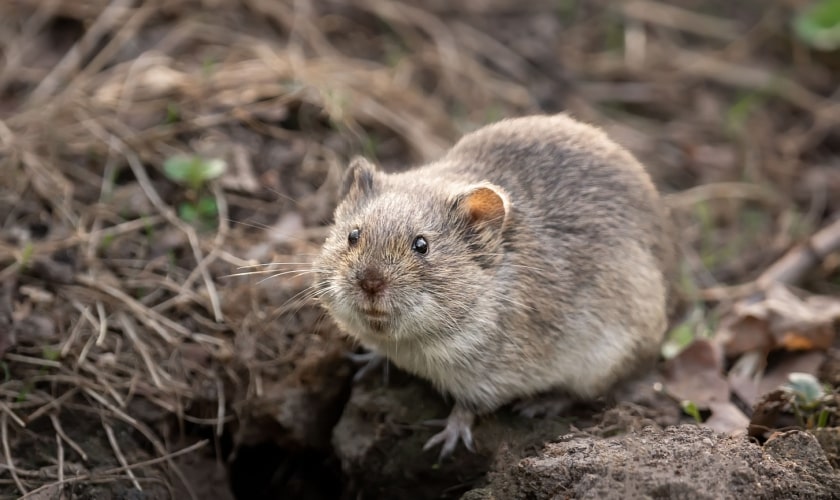Vole Pest Control Demystified: A Total Review of Problem Discovery and Effective Therapy Approaches
As homeowner and yard lovers, the intrusion of voles can be a relentless problem that needs a methodical approach for reliable administration. By comprehending the behavior patterns of these evasive rodents, one can get beneficial understandings right into their preferences and habits. From subtle indicators of invasion to the application of targeted control measures, browsing the world of vole pest control demands a mix of knowledge and strategic activity. In this extensive overview, we will certainly discover the subtleties of vole infestation detection and explore the world of effective treatment methods that can safeguard your rooms from these underground nuisances.
Recognizing Vole Behavior Patterns
Understanding the intricate actions patterns of voles is vital for successfully carrying out parasite control actions in farming and property settings. Voles, little rodents that resemble computer mice yet with stouter bodies, are well-known for their rapid recreation rates and voracious cravings for plants. By delving right into their behavior patterns, parasite control specialists can acquire valuable understandings right into vole vulnerabilities, routines, and choices.
Voles are mainly herbivores, preying on a variety of plants, roots, bulbs, and bulbs. They are also respected tunnelers, producing elaborate underground burrow systems for nesting and foraging. By recognizing these behaviors, parasite control specialists can tactically put traps and lure terminals along vole runways and access factors, enhancing the possibility of successful eradication.
Moreover, expertise of vole habits patterns can assist in establishing safety nets to hinder future invasions. By dealing with variables that attract voles, such as thick plants cover and easily obtainable food sources, building proprietors can make their facilities less inviting to these destructive bugs - vole yard damage. Finally, a complete understanding of vole actions is extremely important in devising effective and sustainable parasite control approaches
Identifying Signs of Vole Problem
Effective vole bug control starts with promptly identifying the indications of vole problem on homes. Among the most common signs of vole visibility is the visibility of surface runways. These paths are slim pathways through lawn or vegetation that voles develop as they travel between their burrows and food resources. In addition, vole droppings are another clear indication of invasion. Vole droppings are tiny, cylindrical pellets that are usually found along their runways or near their burrows.
Along with runways and droppings, gnaw marks on tree bark and plants are additionally indicators of vole task. Voles have a habit of gnawing on the bases of shrubs and trees, which can cause damages and potentially kill the plants. The existence of burrow openings in the ground indicates an active vole populace. Vole burrow entries are typically small and discovered in mulched or verdant locations.
Being vigilant for these indicators can aid homeowner identify vole problems early and take proper bug control steps to prevent more damages.
Applying Targeted Control Procedures
What particular methods can be utilized to effectively carry out targeted control procedures for vole pest monitoring on residential or commercial properties? Applying targeted control procedures for vole insect administration calls for a multi-faceted technique that incorporates both avoidance and elimination approaches. Among the key strategies is habitat alteration, which includes eliminating vole-friendly environments such as high grass, weeds, and particles near structures. Installing obstacles like hardware towel or gravel around yard beds and tree trunks can also assist hinder voles.
Trapping is another efficient method for regulating vole populations. Live traps can be tactically put along vole paths or delve entries, baited with peanut butter or apple slices. Once captured, voles ought to be humanely eliminated to a various location to avoid reinfestation.
Rodenticides vole yard damage can be used as a last resource for severe invasions, however care should be worked out to protect against harm to non-target animals. It is important to adhere to all security standards and laws when making use of rodenticides for vole control.
Environmentally Friendly and natural Remedies
The adoption of environmentally conscious practices can play a critical function in handling vole populations without triggering damage to the ecosystem. Green and all-natural solutions use a lasting method to vole pest control, decreasing using harmful chemicals and advertising biodiversity in the impacted areas.
One reliable all-natural method is using killer urine or killer decoys. Killers like foxes, serpents, and owls are the vole's all-natural enemies. By strategically placing killer urine or decoys around the infested locations, voles may be hindered from resolving in those areas.
In addition, planting vole-resistant plants can assist in decreasing vole damages. Plants such as daffodils, crown imperials, and Siberian squill are known to be unattractive to voles and can work as natural repellents.
In addition, creating physical barriers like cord mesh or crushed rock around susceptible plants can stop voles from accessing them. These obstacles can assist safeguard yards and landscapes without posing any type of danger to the setting or other non-target types. By including these all-natural and environment-friendly remedies, vole invasions can be taken care of properly while maintaining environmental balance.
Long-Term Avoidance Approaches
To sustainably address vole infestations over time, executing proactive steps is vital for long-term prevention methods. By minimizing thick vegetation, mulch, and mess around buildings, you can make your building less appealing to voles.
Normal surveillance of vole activity is crucial for early discovery of any type of indicators of infestation. Setting up vole traps can aid in managing their populace before it becomes a full-blown problem. It is additionally essential to seal off any access indicate frameworks or structures to stop voles from accessing.

Final Thought
In conclusion, understanding vole behavior patterns, identifying indications of invasion, carrying out targeted control measures, making use of eco-friendly and natural remedies, and carrying out lasting prevention techniques are critical steps in effectively taking care of vole infestations. By being proactive and taking the required steps to address vole concerns immediately, individuals can effectively protect against and manage vole infestations in their buildings.
